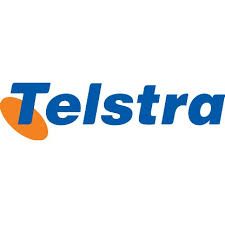
Program Outcome Measure Tool
Order Instructions:
Program Outcome Measure Tool
Due May 04, 11:59 PM
Not Submitted
POINTS 10
Practice/Simulation/Homework/Game
Objectives: 2.3
Instructions
Assignment Files
Grading
Create a program outcome measure tool using the program selected for the Learning Team Evaluation Plan assignment. The following are just some ideas, but you can be creative:
•Pre- and post-questionnaire
•Quiz
•Worksheet
Write a 350- to 700-word paper describing the following:
•Identify the program outcome your tool will address
•Describe how the tool created will be used to collect data to measure the program outcome
•Provide rationale and support as to why this tool was selected
The learning team evaluation plan program is crisis intervention teams (CIT) the audience is law enforcement dealing with mental illness. There are several websites that address this issue. Two current references
SAMPLE ANSWER
Law enforcement on mentally ill patient
In their work, law enforcers should treat mental patients specially. The group is at a risk of being abused following their uncontrolled behavior attributed to their impaired mental status. Lacey indicated that jailed people with mental complications in Los Angeles for instance, constitute 17%of the jailed county’s men population and 24% of the women population (Cordner, 2014, Pg. 92). Lamb and Wigner reported that approximately 10% of prisoners in American jails are severely mentally impaired (Cordner2005, Pg. 245). Mental patients are more likely to break laws as compared to normal people. Extra consideration is therefore necessary before their jailing to avoid unfair treatment.
Reports from police indicated that the rate of involvement of mental patients in unlawful activities was high necessitating the development of initiatives such as the CIT. As Sewell wrote, establishment of crises centers to enhance handling of mentally ill crime suspects was a good move in addressing the situation (Sewell, 2015, Pg. 67). CIT program was developed to intervene on the way law enforcement bodies act when dealing with the mentally incapacitated. The program educates the police and the public on ways of recognizing, and assisting mental patients. Due to their hostile tendencies, mentally ill patients often face discrimination by both the police and the public.
The program incorporates voluntary members from police patrol departments as the University of Memphis illustrated. The institution further explained that CIT extends to other stakeholders such as psychiatric health care providers, resulting in ultimate mutual benefit between the different parties. Police officers enrolled on the program possess extra skills on handling the mentally handicapped.
Outcome of CIT in Law Enforcement for Psychiatric Patients
Law enforcers dealing with psychiatric patients offer the best audience in the study to evaluate the achievements of the CIT program. In the study, the enforcers are expected to give their experiences in dealing with mental patients, before and after undergoing through the program. Issues in a study on the outcome of CIT would include the following:
- The effectiveness of CIT in improving the patient-police interactions. The program equips the police with extra skills in handling people with mental disorders. A change could therefore have resulted in the way the parties interact after the application of the method. A record of incidences of endangerment of either patty would form a good basis for the assessment of how the program influenced the interaction.
- The contribution of CIT toward improved services for the mental patients. The program was designed to harmonize various stakeholders involved in the care for the patients. The effect of the program on the provision of health care and housing facilities among other services to the challenged group would be useful in evaluating its success.
- Involvement of psychiatric patients in crime before and after the CIT took effect. Development of the program was motivated by displeasing tendencies of psychiatric patients to indulge in unlawful activities. Comparison of statistical data about involvement of the patients in crime would help evaluate the outcome of the program.
Collection of data through a precise test offers a convenient way of evaluating the success of CIT. Data from the test would give an impression on the effectiveness of the program. The test should constitute questions that are tied to the objectives of the CIT program. The researcher may then use the results of the test to conclude on the outcome of CIT.
Test
- Are there improvements in the way police and psychiatric patients interact? Cite incidences of hostility, where either patty was endangered.
- Has care provision on mental patient been made easier after application of CIT? Cite any improvement you have noticed from your research.
- Do you think that CIT has enabled the police tackle criminal cases involving mental patients more efficiently? Give evidence.
- Research on how statistics compare on the involvement of mental patient in crime, before and after institution of CIT.
- Do you think CIT offers a good method of law enforcement among the mentally ill population? Support your view with evidence.
References
Cordner, G., (2015). People with Mental Illness.Center for Problem-Oriented Policing. Retrieved April 30, 2015 from http://www.popcenter.org/problems/mental_illness/print/
Sewell, A., (2014). Police need more Training to Deal with Mentally Ill, L.A. County Told. Los Angeles Times. Retrieved from http://www.latimes.com/local/countygovernment/la-me-1030-mental-health-20141030-story.html
University of Memphis.(n.d.) CIT Center: A Resource for CIT Programs across the Nation. Retrieved April 30, 2015 from http://cit.memphis.edu/
We can write this or a similar paper for you! Simply fill the order form!












